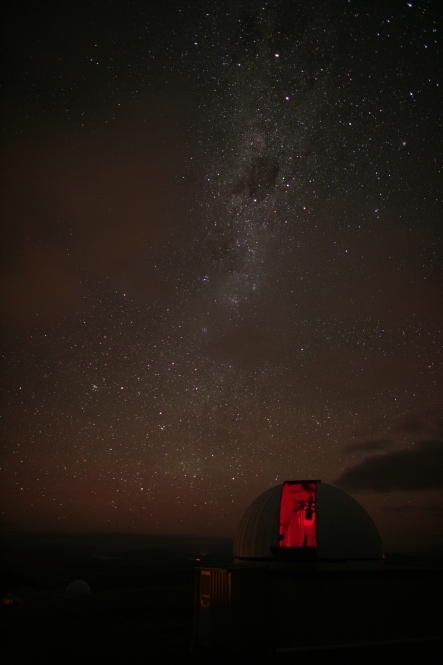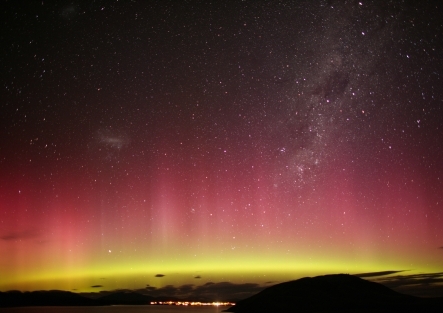by Veronika Meduna

The University of Canterbury’s Mt John Observatory at Lake Tekapo is a centre of astronomical research and training, and now also part of the Aoraki-Mackenzie Dark Sky Reserve. (image: Fraser Gunn)
New Zealand is now home to the world's biggest dark sky reserve. This week, the International Dark-Sky Association executive director Bob Parks announced at the start of the Third International Starlight conference at Lake Tekapo that the Aoraki-Mackenzie Dark Sky Reserve (pdf) has been officially approved. He described the Mackenzie Basin as "one of the best stargazing sites on Earth".
The The 4300skm reserve includes Canterbury University's Mt John Observatory above Lake Tekapo, Twizel and the Aoraki-Mt Cook village and national park. It is one of only four in the world, two of which are in the Southern Hemisphere. It is also the first gold-rated reserve, meaning the night skies above the Mackenzie country are among the best.
The announcement was made in recognition of the low level of light pollution, which allows people to see the night sky more clearly than elsewhere. It comes after several years of campaigning and in this interview the chair of the working group behind the project, Margaret Austin, and University of Canterbury astronomer John Hearnshaw discuss the significance of the decision for the region and astronomy.

An aurora and a starry night sky, as seen at the Mt John Observatory, at Lake Tekapo. (image: Fraser Gunn)

